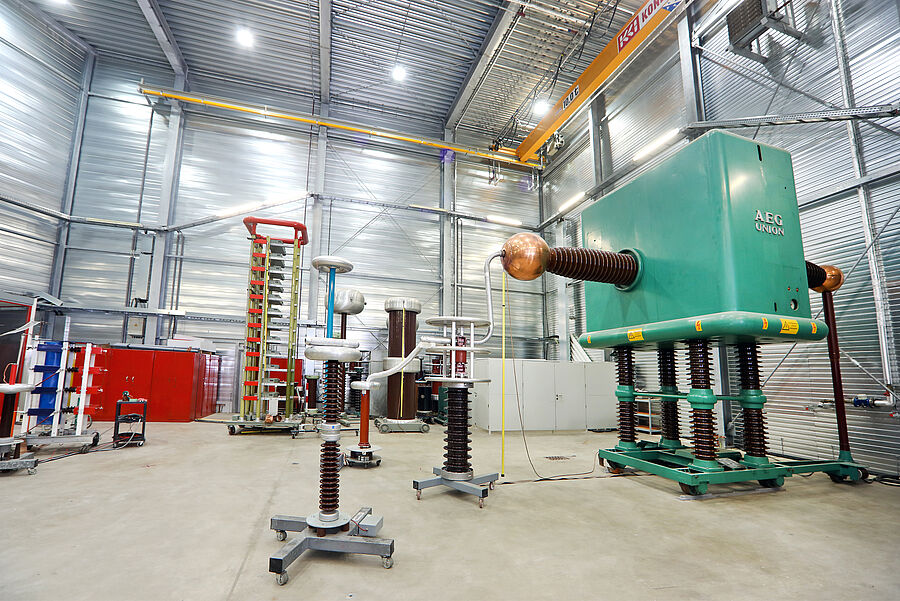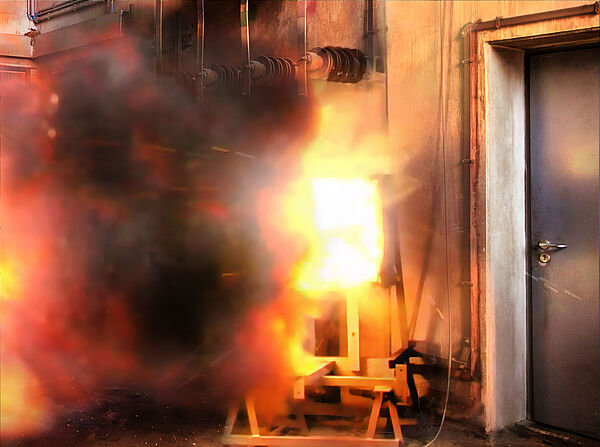ARC FAULT TESTING
As an accredited testing center, AIT offers a combination of experimental infrastructure and computational services to support equipment design and planning. We provide extensive expertise in the prevention and management of arc faults. With our experimental arc fault testing, we offer comprehensive tests for systems with a capacity of up to 120 MVA.
Arc Faults
Arc faults in low-voltage and medium-voltage network installations can generate temperatures of up to 10,000 K and overpressures of several bars in the event of a fault, posing significant risks to both people and equipment. Increasing power demands on electrical grids, heightened risk awareness, and stricter regulatory and normative requirements necessitate proof of arc fault safety.
- During the planning phase, we perform computational assessments of the arc fault resistance of buildings and installations.
- We assist with the design of pressure relief measures, including equipment layout and the design of pressure relief channels and flaps.
- Our experts calculate shock waves and pressure surges in rooms to identify potential risks and recommend appropriate protective measures.
- We conduct risk assessments for existing installations and evaluate arc fault incidents to ensure all systems comply with current safety standards.
Standardized Procedures for Arc Fault Testing
Various national and international standards and regulations, including DIN VDE, IEC, and NFPA guidelines, specify requirements for arc fault safety verification. These frameworks define the minimum safety requirements for electrical installations and serve as a foundation for implementing protective measures.
Strict adherence to these measures and regulations significantly reduces the risk of arc faults in electrical installations, enhancing not only employee safety but also equipment protection and operational reliability. With our experimental arc fault testing in accordance with EN 62271-200 and -202 as well as IEC/TR 61641, we provide comprehensive testing services for systems with a capacity of up to 120 MVA.




![[Translate to English:] High voltage and high power laboratory and testing [Translate to English:] Bild vom High voltage and high power labor](/fileadmin/_processed_/7/8/csm_064_20140404__c_Schedl_ait_13x18-small_0f33517e8f.jpg)
